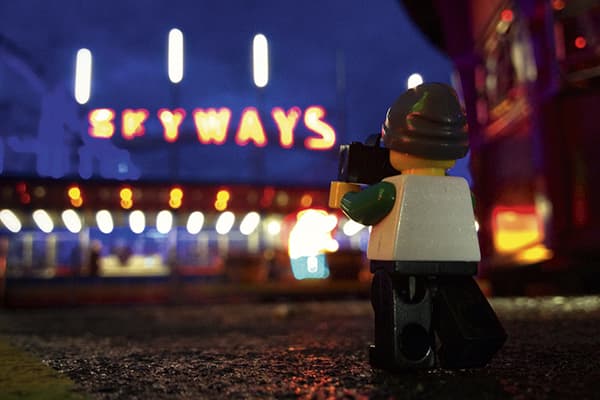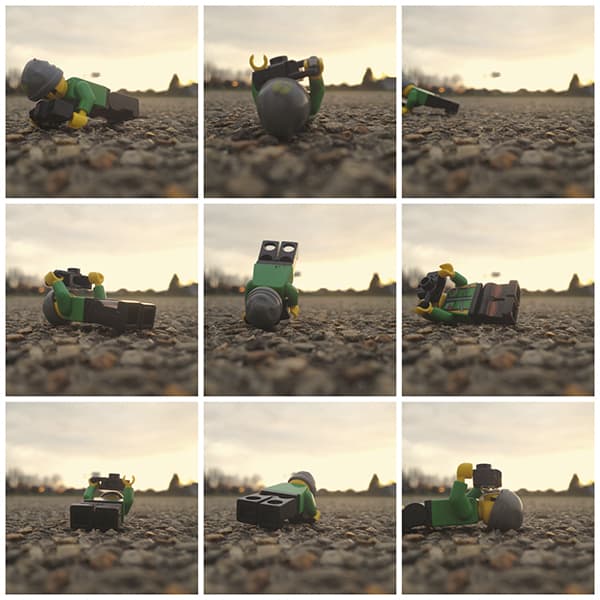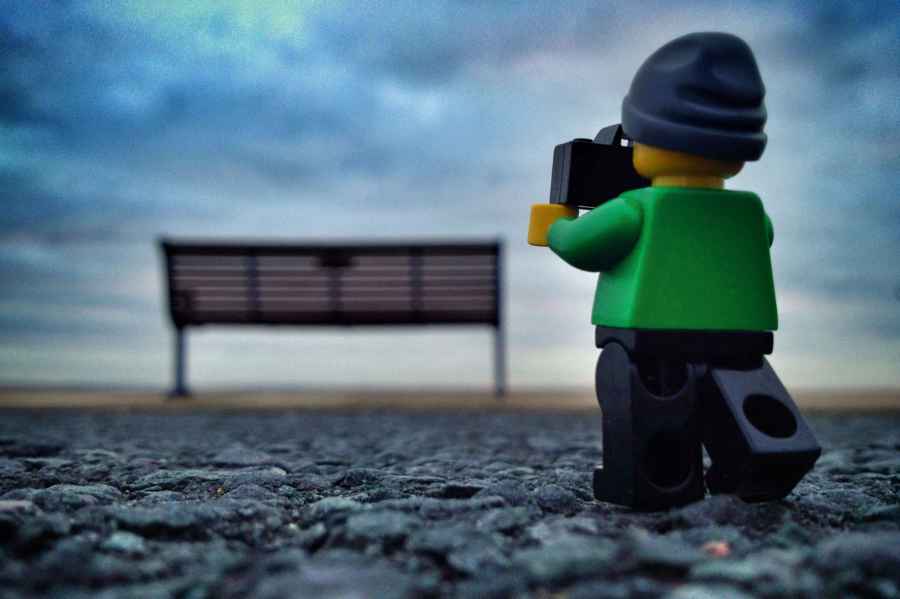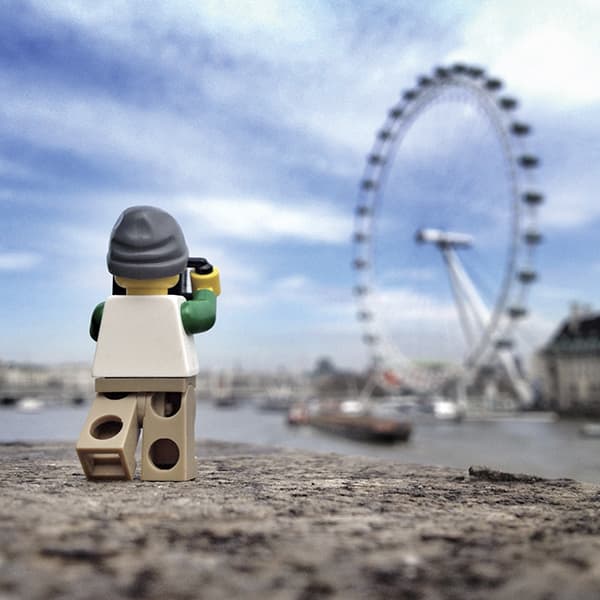A View of the City – Legography
As a commercial photographer, Andrew Whyte specialises in night-time long exposures, leaving daytime free to combine his fascination with mobile photography and Lego. He is regularly found inches away from both pavement and mini-figures around his hometown of Southsea. To see the city (and further afield) from this perspective, visit www.shortexposures.co.uk
It seems the Legography project is in part about revealing the hidden beauty of the city of Portsmouth. Is this true?
The project is largely about Portsmouth, because that’s where I live. It’s a fascinating city because there is a lot of open space, but also a lot of densely populated areas. Also, it’s an island, so of course water and beaches surround it, meaning there’s a real diversity of light.

With a few exceptions, Andrew’s images take place under daylight due to the limits of the phone’s sensor. Photo by Andrew Whyte
However, Legography is also an exploration of smartphone photography. The whole project was shot on my iPhone 4S and iPhone 5S. Not only were these images shot on the phone, but they were also edited, shared and all the correspondence regarding the images was conducted on the phone. I can even upload to my website through my phone. Looking inside my drawer, I have a dozen smartphones that go back to the early 2000s, all of which have cameras. It was a fascinating thing for me to see how far mobile photography has come.

By shooting low, Andrew is able to create a trick perspective so it appears that the scale of the man and location match. Photo by Andrew Whyte
It was also my kind of version of a photo-a-day project. I had tried those kinds of projects before, but I’d never been able to commit. What I found with this was that the Lego pieces were so portable and I always had my phone with me, so there was very little change in my lifestyle to accommodate it. That meant I could shoot every day for a year. It really was a case of stumbling upon things day after day and making something of it. It freed me from the commercial constraints of regular shooting [Andrew has made name for himself with his long exposures and light paintings].

This nine-frame montage shows the difficulty of getting the Lego man to stand up in windy conditions. Photo by Andrew Whyte
When did this project start?
It remains ongoing. I started in August 2012 and I’ve completed the year-long element of it. But it remains ongoing because of the reach it has gained via social media. It far exceeded my expectations and I’ve got a following of nearly 20,000 on Facebook. It would be a shame to let that go.
It’s not happening on a daily basis any more, but there’s always something new. The daily series was very much me looking over the shoulder of this Lego figure, and I found a new approach with the same sort of perspective was to take different figures, for example a daredevil or climber that Lego makes, and work with those other characters even in the same areas and settings I’ve shot before.
Did you carry the figure around everywhere or do you set aside particular times to shoot?
The figure and phone went with me every time I left the house. That said, there were times where my schedule or mindset didn’t allow something to happen organically. In those cases, I would go out later in the day to shoot something.
I can only imagine the headaches you endured working with such a small figure in elements like wind and rain. How did you cope?
It was as much a year-long record of weather as it was the city. That was necessary because I always preferred to shoot outdoors. There are very few images that were made indoors and that’s largely to do with the quality of light. The one area that smartphones really need to develop is their low-light ability.
Shooting outdoors was also a little about scale and the desire to sometimes position the figure in such a way that it looks almost as if it is a natural part of the environment.
I loved all aspects of the weather except wind. The wind was the most frustrating challenge of all because of course you can’t see it and you can’t prepare for it. Even a tiny bit of Blu-Tack wasn’t good enough, either because I couldn’t press it down enough or because it doesn’t stick to every surface. I tried double-sided tape, but it was difficult to get it neat. In the end, I had to make the best of it.











